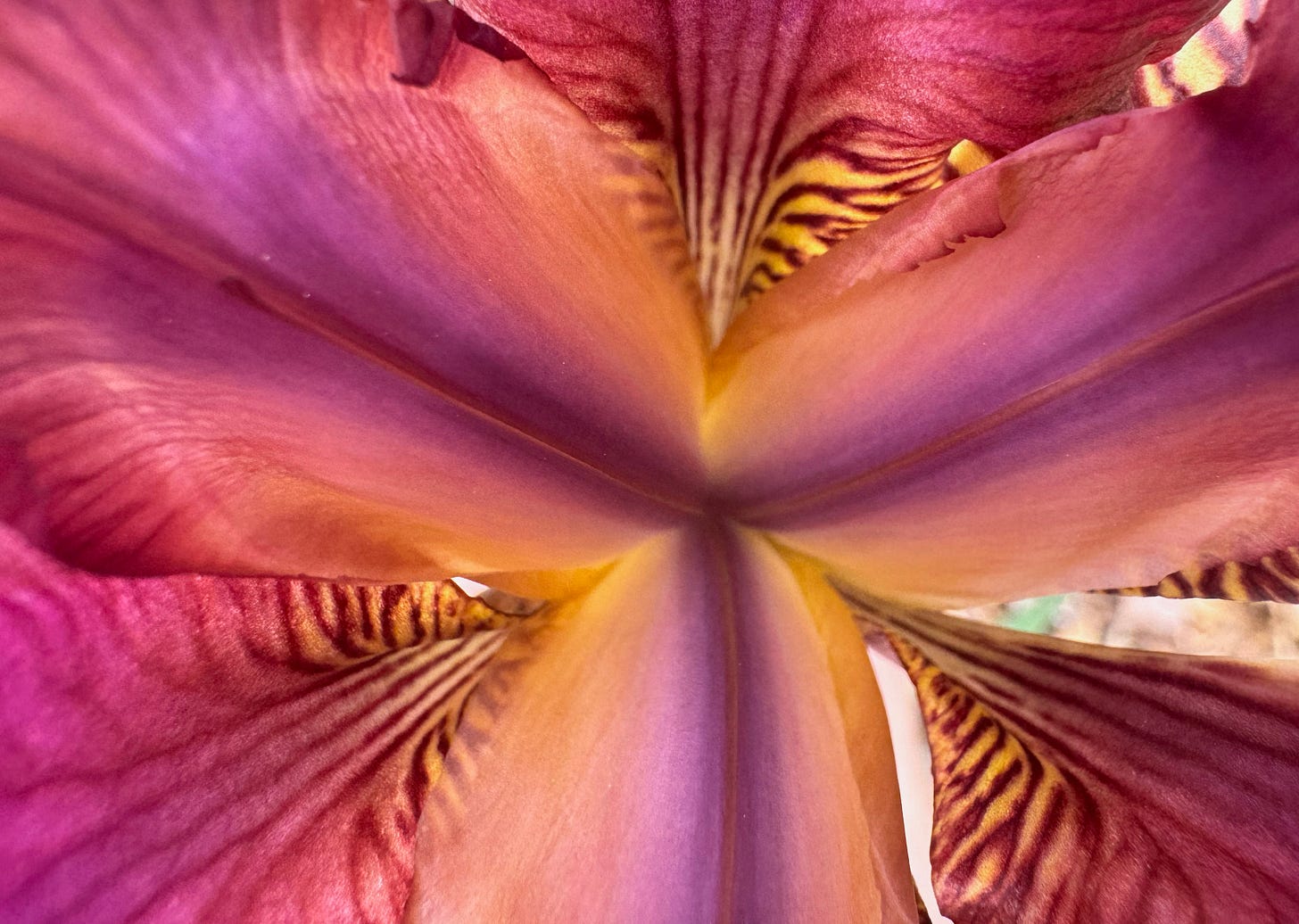A few years ago, I drove with my dad about an hour outside of town to my late grandmother's home. She was an avid gardener, and her flower of choice — the kind that covered every inch of her property — was irises. She passed away when I was a teenager, but her home stayed in the family. For a few springs in a row, my dad and I (fellow gardeners, like Grandma) would drive out to her little house and borrow her irises. I say borrow, because even though they're not in her yard anymore, they're still hers. Just on loan.
The first year we made the trek out to her house, we had just had a week of heavy rain. We traipsed through the mud in her yard, and we didn't even have to get the shovels out. The ground was so soft, you could just pull the plants right out of the mud — tubers, roots, and all. Each year, we would dig (or pull) up enough irises to fill the back of my dad's SUV. We'd take them home, split them between his yard and mine, and wish we had dug up more. There's always room for more.
The bloom of an iris is so delicate-looking, with it's thin petals spilling out like they're falling out of bed. But an iris plant is actually quite hardy. The green spiking leaves stay sticking straight out of the ground all winter, if you don't cut them back. Pops of green out in the snow. For as long as I've had irises in my yard, I've had a very large dog bounding through them, and they still manage to keep growing. My dad used to say you could throw an iris over the fence and ignore it, and the next year there'd be a whole patch of them.
My first batch from Grandma's, I planted in my backyard — all in a row along the neighbor's garage that served as my north fence. But the next year, that neighbor tore their house down along with the garage, and I had to uproot the irises and replant them out of reach of the bulldozers. Their second move in as many years, poor things.
The next year, that batch came back, but there were no buds or blooms. They were still getting used to their surroundings, and I don't think they had enough light.
Later that year, a storm brought down a neighbor's large tree to the east, and a fire brought down another one, even bigger. The sky opened up wide, and fresh light poured into my once fully-shaded backyard. More light, more change.
The following year, the irises came back again. Despite all the change in location and light and being uprooted and replanted (twice!) — they multiplied. There were more of them, and they seemed more full. They didn’t just survive, they thrived.
And then I noticed it.
One single bud on one single plant. It was closed tightly, the color tucked safely inside. It was waiting for the right moment to open.
When Grandma was in her iris era, she figured out how to cross-breed her plants to create new bloom colors (who does that?!). The best part is that she would name the new varieties after her grandkids. I wish I could remember which color had my name, but I do remember my favorite color: the Dr. Pepper ones. They were these deep purple-maroon blooms with a little hint of light creamy yellow in the middle. It looked like Dr. Pepper with that little layer of fizz.
The fun part of digging up the irises at her house all these years later, is that we did our uprooting after the blooms were spent, so we didn't know what colors we were getting. And when an iris blooms, the bud is enveloped in this green stem for the first few days before the color shows itself. The surprise takes its sweet time.
I checked in on my single iris bud after a heavy morning storm came through. And wouldn't ya know it, that hardy thing was still standing there, tall and strong. When I knelt down close, I could see the tiniest hints of rich, golden yellow trying to peek through. And I knew she would need a name.
Sometimes we don’t bloom where we’re planted.
Sometimes we have to move around until we hit the right spot. Third tries and fourth tries and tenth tries.
Sometimes other people’s decisions — like a torn down garage — affect how we live and where we go next.
Sometimes the change is out of everyone's control — like a storm or a fire — and we’re forced to adapt yet again.
Sometimes it takes longer than we expected to see buds and blooms and color again.
We lose our light. We get trampled on. A bulldozer gets too close. We sit leaf-deep in cold snow and wait for the warmth of spring.
Sometimes it doesn’t happen on our timeline.
But if we are patient enough, and keep going with the water and the sun and the soil and the care and the checking in after the storms — if we keep going, we start to see the color peek through again.
We don’t know what it’ll be — golden yellow, stark white, Dr. Pepper purple — but we wait to be surprised.
We’ve been promised a flower, and here it comes in it’s own time.






